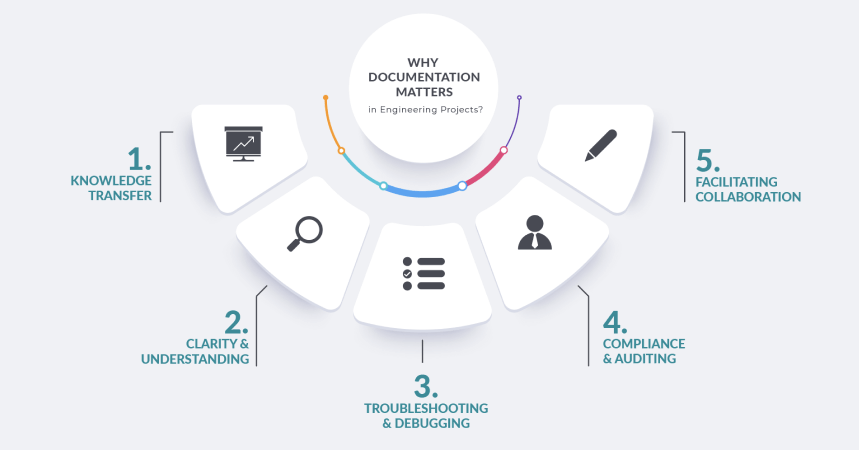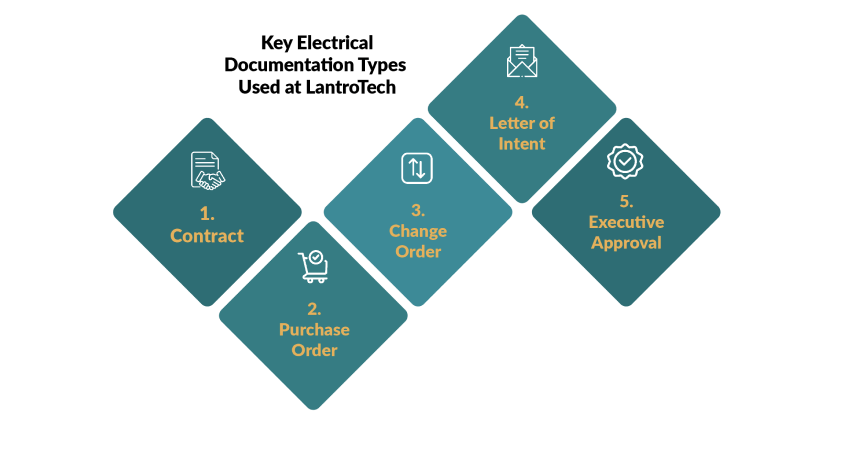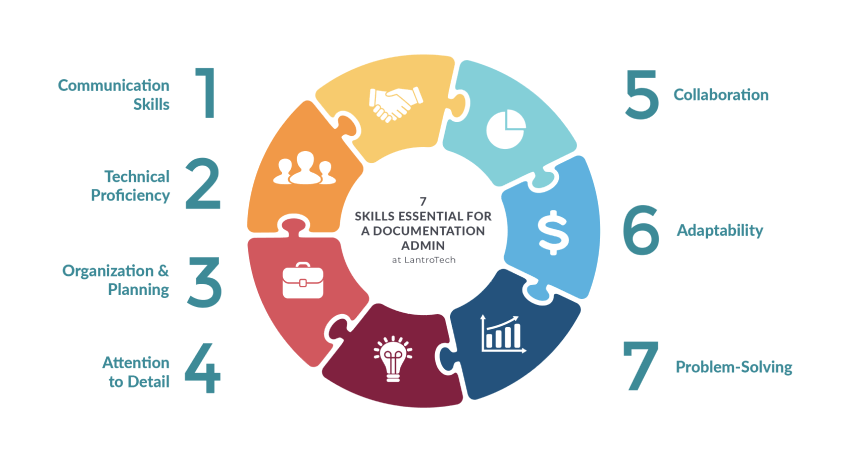Engineering Documentation
The Power of Engineering Documentation: A Comprehensive Guide
LantroTech Marketing
December 21, 2023

Let’s start from the basics. What is documentation? In simple terms, documentation is the systematic organization and communication of information essential for maintaining a system, process, or project. It serves as a detailed reference that outlines essential guidelines, aiding individuals in comprehending and working with a given organization. At LantroTech, we consider efficient and technical documentation as a cornerstone for successful document management, particularly in the dynamic and intricate field of power engineering. For engineering projects to be safe, dependable, efficient, and of high quality, documentation and reporting are necessary.
However, in recent news, many power engineers have trouble producing and overseeing efficient reporting and engineering documentation, which can result in mistakes, holdups, miscommunications, and, in some cases, major arguments. This blog explores the importance of engineering documentation and shares insights on best practices employed by LantroTech to enhance power engineering management, reporting, and documentation procedures.
Why Documentation Matters in Engineering Projects: A Closer Look

1. Knowledge Transfer:
Documentation serves as a repository of knowledge, allowing for the seamless transfer of information and solidifying agreements between team members. It ensures that critical insights and procedures are not lost when individuals transition in or out of a project.
2. Clarity and Understanding:
Well-documented projects foster better comprehension. Clear and concise documentation helps team members and stakeholders understand the project’s objectives, requirements, and processes, reducing the likelihood of misunderstandings.
3. Troubleshooting and Debugging:
In the event of issues or errors, documentation serves as a troubleshooting guide. Detailed logs, error messages, and resolution steps can significantly expedite the debugging process and minimize downtime.
4. Compliance and Auditing:
Documentation is essential for compliance with industry standards and regulations. It provides a trail of actions taken, decisions made, and changes implemented, facilitating audits and ensuring that the project aligns with legal and regulatory requirements.
5. Facilitating Collaboration:
Effective collaboration is built on shared understanding. Documentation enhances collaboration by providing a common reference point for all team members. This ensures that everyone is on the same page, working towards the same goals.
Key Electrical Documentation Types Used at LantroTech
In the realm of business and project management, various types of technical documentation serve distinct purposes, contributing to the efficiency, transparency, and legal clarity of operations. Here are five crucial types of Electrical Documentation used at LantroTech:

1. Contract:
A contract is a legally binding agreement between two or more parties, outlining the terms, conditions, and obligations associated with a specific project, service, or transaction. Contracts serve as a foundation for business relationships, mitigating risks and establishing clear expectations. Some essential key components include: Identification of Parties, Scope of Work, Terms and Conditions, Payment and Deliverables, Legal Considerations and Signatures.
2. Purchase Order:
A purchase order (PO) is a document issued by a buyer to a seller, indicating the type, quantity, and agreed-upon price of products or services. It serves as a formal request for the delivery of goods or the provision of services and becomes a contractual agreement upon acceptance by the seller. Some essential key components include: Buyer and Seller Information, Itemized List of Products or Services, Quantity and Unit Price, Delivery Terms and Payment Terms.
3. Change Order:
Change orders are documents used to request and record changes to the original scope of work or contract. They outline modifications in terms of additional work, changes in specifications, or adjustments to project timelines and costs. Change orders help maintain project transparency and prevent disputes. Some essential key components include: Description of Change, Quantity and Unit Price, Schedule, and Budget, Approval Signatures and Revised Terms and Conditions.
4. Letter of Intent:
A Letter of Intent (LOI) is a preliminary document expressing an individual or organization’s intention to enter into a specific agreement or transaction with another party. While not legally binding, an LOI outlines the key terms and conditions, paving the way for formal negotiations. Some essential key components include: Parties Involved, Purpose of the Agreement, Proposed Terms and Conditions
5. Executive Approval:
Executive approval documents are used to seek endorsement or authorization from senior management or executives for a particular decision, project, or expenditure. These documents ensure that major business decisions align with the organization’s strategic objectives. Some essential key components include: Purpose of Approval, Details of the Decision or Project, and Budget, Signatures of Approving Executives.
Each of these types of documentation plays a crucial role in business operations, helping us establish and manage relationships and ensure the smooth execution of projects and transactions. Clear, well-documented agreements contribute to the overall success and integrity of business activities.
7 Skills Essential for a Documentation Admin at LantroTech
To effectively manage and create documentation, a documentation administrator at LantroTech requires a diverse skill-set. Here are some key skills necessary for the role:

1. Communication Skills:
Clear and concise communication is crucial for creating documentation that is easy to understand.
2. Technical Proficiency:
A solid understanding of the technical aspects of the project is essential for accurately documenting processes and procedures.
3. Organization and Planning:
Documentation administrators must be adept at organizing information logically and planning for the documentation needs of a project.
4. Attention to Detail:
Precise and accurate documentation is vital. Attention to detail ensures that no critical information is overlooked.
5. Collaboration:
Working closely with various stakeholders, including developers, testers, and end-users, requires strong collaboration skills to gather and incorporate diverse perspectives.
6. Adaptability:
Projects evolve, and documentation administrators must adapt to changes, updating documentation to reflect the current state of the project.
7. Problem-Solving:
The ability to analyze problems and provide solutions is valuable when addressing issues in documentation or improving existing processes.
Conclusion
In the realm of documentation at LantroTech, our commitment to precision and excellence is reflected in our handling of essential electrical documentation. By integrating advanced tools and technologies, we ensure that our documentation processes are not just routine tasks but strategic elements contributing to the success of each project.
At LantroTech, our dedicated team of professionals recognizes the paramount importance of clear, comprehensive documentation in the field of electrical engineering and design. From schematic diagrams to operation manuals, we employ a systematic and thorough approach to ensure that every detail is accurately captured and communicated. This commitment extends beyond mere compliance; it is a testament to our unwavering dedication to quality and reliability.
To explore more about our comprehensive documentation services, we invite you to connect with us. Feel free to reach out by completing the form below and discover how LantroTech can elevate the documentation standards of your electrical engineering projects.